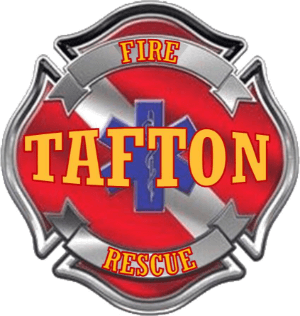The Water Rescue Team consists of members trained and equipped to respond to incidents involving open water, swift water, rapid deployment search-rescue/recovery and rapid deployment ice diving-rescue/recovery. The Team is equipped to dive fully encapsulated into many different water environments.
Divers, of course, are divers. They’re the ones who put on the Self Contained Underwater Breathing Apparatus (also known as SCUBA) and go under the water to recover lost items or people. Divers are also trained to perform surface or swift water rescues and ice rescues.
Tenders work on the surface or shore. They are trained to perform surface, swift water and ice rescue. On an underwater rescue or recovery call, tenders are the life line of the divers. Without tenders, the job of divers would be impossible. Here’s how they function together:
When the Water Rescue Team arrives on the location of a search, they are told which area of the body of water they will be searching. The divers prepare their diving equipment while the tenders prepare the ropes and harnesses which will be the divers’ life line to the surface. The divers submerge wearing a harness with a rope attached. The divers keep this rope wrapped around one hand, to be used to communicate with the surface. A series of tugs on the rope from the tender to the diver, or vice versa, is used to communicate messages back and forth. This way, the tender instructs the diver which direction to go while the diver is underwater. Often, the water is too murky for the diver to see anything that’s not right in front of his or her face and the diver could easily wander well beyond the search area without knowing it.
Water Rescue TeamEquipment, The Water Rescue Team uses the best possible equipment to ensure the best possible results on each of our “jobs” and in training. If you’re not familiar with the equipment used by divers, here are some examples:
- Wet Suit or Dry Suit. Wet Suit will get wet on the inside and is useful when water temperature is with levels tolerable to humans. The wet suit or dry suit will cover every inch of the diver’s body except the face. The thin layer of water that gets trapped between the suit and the diver’s skin gets heated by body heat and helps keep the diver warm if the water is chilly.
- The mask allows the diver to see underwater and prevents floating objects from getting into the diver’s eyes.
- The Regulator is part of the breathing apparatus. It controls the flow of air into the diver’s mouth and has a valve that allows the diver to exhale out to the water without letting water into the diver’s mouth. When the diver exhales it creates the bubbles you see on the surface.
- BC or Bouyancy Compensator. This is a “vest” that the diver wears which not only holds the diver’s compressed air cylinder but also can be inflated or deflated to increase or decrease the diver’s bouyancy (ability to float) in the water. The BC can be inflated using air from the compressed air cylinder or the diver can inflate it using his or her own breath.
- Compressed Air Cylinder. Exactly what its name implies, it is a metal cylinder which is filled with compressed air which the diver breathes while underwater.”NOTE: Cylinders are not always filled with compressed air. On deep dives, other gases may be used to combat the effects of “the bends” a painful and sometimes deadly expansion of gases in the diver’s bloodstream. Fins(called”flippers” by some people) are worn on the diver’s feet to allow the diver to swim rapidly underwater.
Side Scan Sonar
The Side Scan Sonar purchased by the Tafton Fire Company will increase the speed of searching in the murky water of the big lake by a factor of 60, or around 30 acres an hour, as opposed to less than half an acre an hour for a diver who often can’t see past the ends of his fingers, as was the case in the most recent search.
The lack of good “point last seen”information can extend the search area to tens of hundreds of acres. Often the search area is large because there are no eyewitnesses or the eyewitnesses cannot accurately identify the place where the drowning victim or object was last seen. Large areas are often impossible to effectively search with traditional techniques and consequently searches are terminated after several days and recovery is left to chance.Side Scan Sonar
Jon Tandy explained that conventional sonar systems — better known as depth finders–do not have the resolution required to identify a body on the bottom of the lake, where there are old petrified tree stumps and other debris from when the lake was constructed in 1925.
The Side Scan Sonar system’s transducer is housed in a towfish, which is towed through the water a few feet above the bottom. The reflected acoustic returns are processed in a image similar to an aerial photograph, which is viewed real-time on a computer monitor in the towing vessel.
